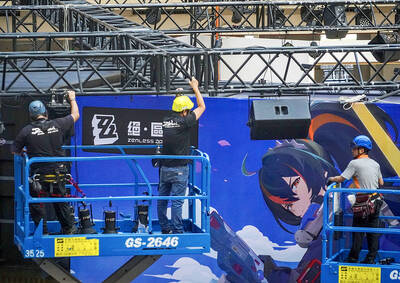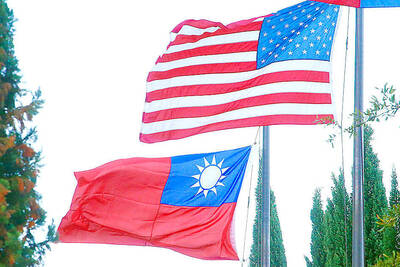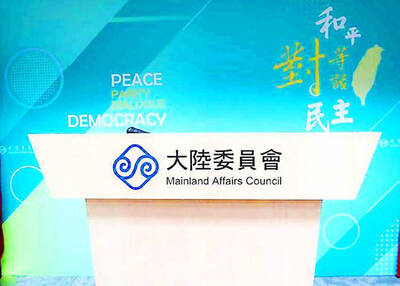South Korea's LG Electronics Inc said yesterday it is closing a plant that makes plasma display panels to cut costs and rejuvenate its business.
The company will stop producing flat panels at one of its four PDP plants in Gumi, 260km southeast of Seoul, said LG spokeswoman Judy Pae.
Pae said the shutdown is scheduled for the first half of this year.
"This move is to increase operational efficiency and to reduce costs" totaling US$22 million to US$32 million annually, LG Electronics said in a statement issued later.
"This is a part of LG's ongoing efforts to improve the performance of its plasma display panel business as a whole," the statement said.
LG Electronics is South Korea's largest consumer appliance manufacturer. Besides plasma displays, the company is also a major global producer of cell phone handsets.
The plant to be shut, named A1, is the oldest of the company's four and has an annual capacity of 840,000 42-inch plasma panels used in flat screen televisions, or 70,000 a month.
LG's total 42-inch plasma display module production capacity will decline to 360,000 units per month, or 4.32 million a year, with the loss of the A1 plant, the statement said.
LG Electronics lost 123 billion won (US$132.1 million) in the three months ended March 31. It recorded net profit of 150.8 billion won a year earlier.
The market for flat panels, including plasma and liquid crystal displays, has suffered amid oversupply and falling prices for the components.
LG competes with other plasma makers including South Korea's Samsung SDI Co and Japan's Matsushita Electric Industrial Co.
Samsung Electronics Co and South Korea's LG.Philips LCD Co are the world's two top manufacturers of liquid crystal displays.

Taiwan is projected to lose a working-age population of about 6.67 million people in two waves of retirement in the coming years, as the nation confronts accelerating demographic decline and a shortage of younger workers to take their place, the Ministry of the Interior said. Taiwan experienced its largest baby boom between 1958 and 1966, when the population grew by 3.78 million, followed by a second surge of 2.89 million between 1976 and 1982, ministry data showed. In 2023, the first of those baby boom generations — those born in the late 1950s and early 1960s — began to enter retirement, triggering

One of two tropical depressions that formed off Taiwan yesterday morning could turn into a moderate typhoon by the weekend, the Central Weather Administration (CWA) said yesterday. Tropical Depression No. 21 formed at 8am about 1,850km off the southeast coast, CWA forecaster Lee Meng-hsuan (李孟軒) said. The weather system is expected to move northwest as it builds momentum, possibly intensifying this weekend into a typhoon, which would be called Mitag, Lee said. The radius of the storm is expected to reach almost 200km, she said. It is forecast to approach the southeast of Taiwan on Monday next week and pass through the Bashi Channel

NO CHANGE: The TRA makes clear that the US does not consider the status of Taiwan to have been determined by WWII-era documents, a former AIT deputy director said The American Institute in Taiwan’s (AIT) comments that World War-II era documents do not determine Taiwan’s political status accurately conveyed the US’ stance, the US Department of State said. An AIT spokesperson on Saturday said that a Chinese official mischaracterized World War II-era documents as stating that Taiwan was ceded to the China. The remarks from the US’ de facto embassy in Taiwan drew criticism from the Ma Ying-jeou Foundation, whose director said the comments put Taiwan in danger. The Chinese-language United Daily News yesterday reported that a US State Department spokesperson confirmed the AIT’s position. They added that the US would continue to

The number of Chinese spouses applying for dependent residency as well as long-term residency in Taiwan has decreased, the Mainland Affairs Council said yesterday, adding that the reduction of Chinese spouses staying or living in Taiwan is only one facet reflecting the general decrease in the number of people willing to get married in Taiwan. The number of Chinese spouses applying for dependent residency last year was 7,123, down by 2,931, or 29.15 percent, from the previous year. The same census showed that the number of Chinese spouses applying for long-term residency and receiving approval last year stood at 2,973, down 1,520,